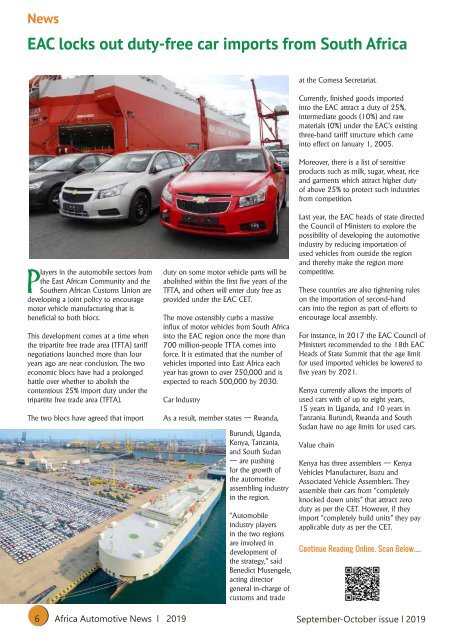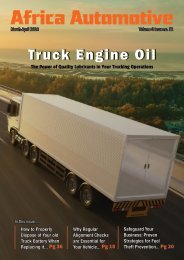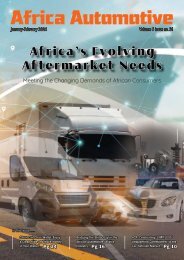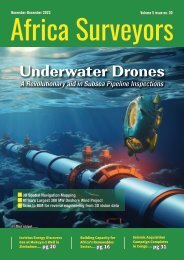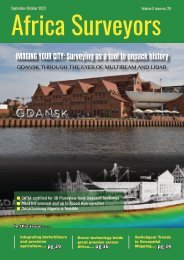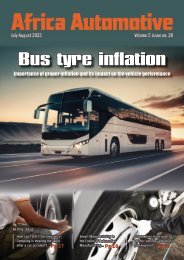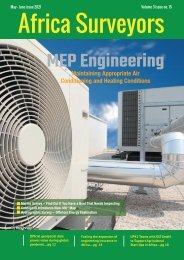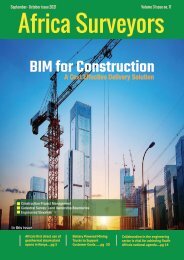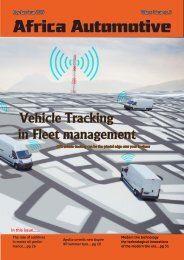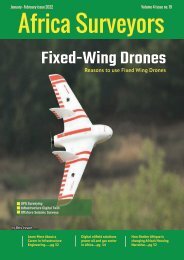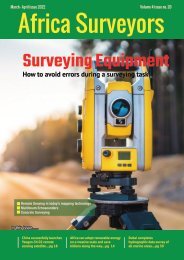Africa Automotive News September-October digital issue 2019
Africa Automotive prides itself to be the ONLY Africa’s leading and MOST authoritative magazine for the automotive industry in Africa with printed copies for the automotive industry decision makers in both government, NGO’s and private sector. The Bi-monthly magazine offers cost effective advertising services that get results and improves growth in the auto B2C and B2B sector, keeping an eye on latest technologies in Africa and across the world, the magazine predominately covers the developments in the Africa auto industry.
Africa Automotive prides itself to be the ONLY Africa’s leading and MOST authoritative magazine for the automotive industry in Africa with printed copies for the automotive industry decision makers in both government, NGO’s and private sector. The Bi-monthly magazine offers cost effective advertising services that get results and improves growth in the auto B2C and B2B sector, keeping an eye on latest technologies in Africa and across the world, the magazine predominately covers the developments in the Africa auto industry.
You also want an ePaper? Increase the reach of your titles
YUMPU automatically turns print PDFs into web optimized ePapers that Google loves.
<strong>News</strong><br />
EAC locks out duty-free car imports from South <strong>Africa</strong><br />
at the Comesa Secretariat.<br />
Currently, finished goods imported<br />
into the EAC attract a duty of 25%,<br />
intermediate goods (10%) and raw<br />
materials (0%) under the EAC’s existing<br />
three-band tariff structure which came<br />
into effect on January 1, 2005.<br />
Moreover, there is a list of sensitive<br />
products such as milk, sugar, wheat, rice<br />
and garments which attract higher duty<br />
of above 25% to protect such industries<br />
from competition.<br />
Players in the automobile sectors from<br />
the East <strong>Africa</strong>n Community and the<br />
Southern <strong>Africa</strong>n Customs Union are<br />
developing a joint policy to encourage<br />
motor vehicle manufacturing that is<br />
beneficial to both blocs.<br />
This development comes at a time when<br />
the tripartite free trade area (TFTA) tariff<br />
negotiations launched more than four<br />
years ago are near conclusion. The two<br />
economic blocs have had a prolonged<br />
battle over whether to abolish the<br />
contentious 25% import duty under the<br />
tripartite free trade area (TFTA).<br />
The two blocs have agreed that import<br />
duty on some motor vehicle parts will be<br />
abolished within the first five years of the<br />
TFTA, and others will enter duty free as<br />
provided under the EAC CET.<br />
The move ostensibly curbs a massive<br />
influx of motor vehicles from South <strong>Africa</strong><br />
into the EAC region once the more than<br />
700 million-people TFTA comes into<br />
force. It is estimated that the number of<br />
vehicles imported into East <strong>Africa</strong> each<br />
year has grown to over 250,000 and is<br />
expected to reach 500,000 by 2030.<br />
Car Industry<br />
As a result, member states — Rwanda,<br />
Burundi, Uganda,<br />
Kenya, Tanzania,<br />
and South Sudan<br />
— are pushing<br />
for the growth of<br />
the automotive<br />
assembling industry<br />
in the region.<br />
“Automobile<br />
industry players<br />
in the two regions<br />
are involved in<br />
development of<br />
the strategy,” said<br />
Benedict Musengele,<br />
acting director<br />
general in-charge of<br />
customs and trade<br />
Last year, the EAC heads of state directed<br />
the Council of Ministers to explore the<br />
possibility of developing the automotive<br />
industry by reducing importation of<br />
used vehicles from outside the region<br />
and thereby make the region more<br />
competitive.<br />
These countries are also tightening rules<br />
on the importation of second-hand<br />
cars into the region as part of efforts to<br />
encourage local assembly.<br />
For instance, in 2017 the EAC Council of<br />
Ministers recommended to the 18th EAC<br />
Heads of State Summit that the age limit<br />
for used imported vehicles be lowered to<br />
five years by 2021.<br />
Kenya currently allows the imports of<br />
used cars with of up to eight years,<br />
15 years in Uganda, and 10 years in<br />
Tanzania. Burundi, Rwanda and South<br />
Sudan have no age limits for used cars.<br />
Value chain<br />
Kenya has three assemblers — Kenya<br />
Vehicles Manufacturer, Isuzu and<br />
Associated Vehicle Assemblers. They<br />
assemble their cars from “completely<br />
knocked down units” that attract zero<br />
duty as per the CET. However, if they<br />
import “completely build units” they pay<br />
applicable duty as per the CET.<br />
Continue Reading Online. Scan Below.....<br />
6 <strong>Africa</strong> <strong>Automotive</strong> <strong>News</strong> l <strong>2019</strong> <strong>September</strong>-<strong>October</strong> <strong>issue</strong> l <strong>2019</strong>


